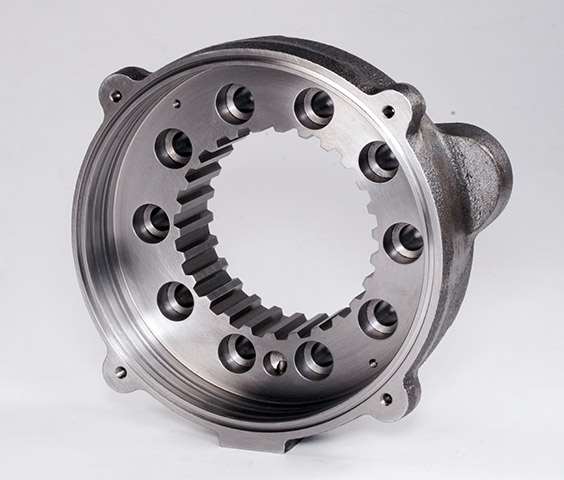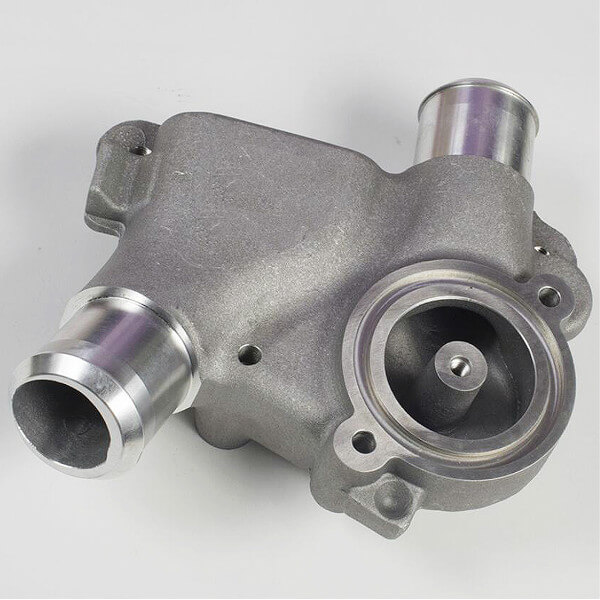CF8 vs CF8M STAINLESS STEEL FAQ
CF8 and CF8M are two commonly used stainless steel grades in various industrial applications. While they may seem similar, there are some key differences between the two that are important to understand when selecting the appropriate material for a specific application.
CF8 is a type of austenitic stainless steel that contains 18% chromium and 8% nickel. It is known for its excellent corrosion resistance, high ductility, and good weldability. CF8 is commonly used in applications where corrosion resistance is critical, such as in the food and beverage industry, chemical processing, and marine environments.
CF8M, on the other hand, is a type of molybdenum-containing austenitic stainless steel that contains 18% chromium, 10% nickel, and 2-3% molybdenum. It offers higher corrosion resistance than CF8, particularly in chloride environments, and is often used in applications where resistance to pitting and crevice corrosion is important, such as in the oil and gas industry and in seawater applications.

What is CF8 Stainless Steel?
CF8 stainless steel is a type of austenitic stainless steel that is commonly used in casting applications. It is also known as 304 stainless steel and is one of the most widely used stainless steel grades.
The chemical composition of CF8 stainless steel includes a minimum of 18% chromium and 8% nickel, which gives it its excellent corrosion resistance properties. It also contains small amounts of carbon, manganese, silicon, and phosphorus.
CF8 stainless steel is commonly used in casting applications due to its excellent castability. It can be easily cast into various shapes and sizes, making it ideal for applications that require complex shapes.
In terms of mechanical properties, CF8 stainless steel has a yield strength of 30 ksi and a tensile strength of 75 ksi. It also has an elongation of 30% and a hardness of 150 Brinell.
CF8 stainless steel has good weldability and can be easily welded using common welding techniques. It also has good machinability, which makes it easy to machine and fabricate.
Overall, CF8 stainless steel is a versatile material that is commonly used in a wide range of applications, including food processing equipment, chemical processing equipment, and architectural applications. Its excellent corrosion resistance, castability, and mechanical properties make it a popular choice for many different industries.
What is CF8M Stainless Steel?
CF8M is a type of stainless steel that is commonly used in various industrial applications. It is also known as Grade 316 stainless steel and is a low-carbon version of CF8 stainless steel. The “M” in CF8M stands for “molybdenum,” which is an alloying element that provides additional corrosion resistance to the steel.
CF8M stainless steel has a chemical composition that includes chromium, nickel, molybdenum, and other elements. The exact composition may vary depending on the specific application and manufacturer. Generally, CF8M stainless steel contains 16-18% chromium, 10-14% nickel, and 2-3% molybdenum.
CF8M stainless steel is often used in casting applications because it has excellent castability and weldability. It can also be easily machined and has good corrosion resistance, making it suitable for use in harsh environments.
In terms of mechanical properties, CF8M stainless steel has a high yield strength, tensile strength, and elongation. It is also relatively hard and has good wear resistance. The exact mechanical properties may vary depending on the specific heat treatment and manufacturing process used.
In terms of weldability, CF8M stainless steel can be welded using various techniques such as gas tungsten arc welding (GTAW), gas metal arc welding (GMAW), and shielded metal arc welding (SMAW). However, it is important to use the appropriate welding technique and filler material to ensure the best results.
Overall, CF8M stainless steel is a versatile material that is widely used in various industrial applications due to its excellent corrosion resistance, castability, and weldability.
CF8 vs CF8M Stainless Steel
CF8 and CF8M stainless steels are two popular grades of stainless steel that are commonly used in a variety of applications. These two grades of stainless steel share many similarities, but also have some differences that make them unique.
Chemical Composition
CF8 and CF8M stainless steel have similar chemical compositions, with the main difference being the addition of molybdenum in CF8M. CF8 is a cast austenitic stainless steel with a maximum carbon content of 0.08%, while CF8M is a cast austenitic stainless steel with a maximum carbon content of 0.08% and a maximum molybdenum content of 3%.
Casting and Mechanical Properties
Both CF8 and CF8M are castable, but CF8M has better castability due to its higher molybdenum content. In terms of mechanical properties, CF8 has a higher yield strength and hardness than CF8M, but CF8M has a higher tensile strength and elongation.
Weldability and Machinability
Both CF8 and CF8M are weldable and machinable, but CF8M has better weldability due to its higher molybdenum content. CF8M is also more machinable than CF8 due to its lower carbon content.
Corrosion Resistance
CF8 and CF8M stainless steel are both highly corrosion-resistant, but CF8M has better corrosion resistance than CF8 due to its higher molybdenum content. CF8M is particularly resistant to pitting and chlorides, making it a popular choice for marine applications.
Other Properties
CF8M stainless steel is non-magnetic, while CF8 may exhibit some magnetic properties. CF8M also has better oxidation resistance than CF8, and both grades exhibit good ductility.
In summary, CF8 and CF8M stainless steel are both excellent choices for a variety of applications. While they share many similarities, CF8M has better castability, weldability, and corrosion resistance due to its higher molybdenum content. CF8, on the other hand, has higher yield strength and hardness.
Austenitic Stainless Steel
Austenitic stainless steel is a type of stainless steel that is known for its excellent corrosion resistance, high ductility, and low magnetic permeability. It is a non-magnetic alloy that contains chromium, nickel, and molybdenum, and sometimes other elements such as nitrogen or manganese.
Austenitic stainless steel is the most common type of stainless steel used in various industries, including food processing, pharmaceuticals, and chemical processing. It is also used in the construction of buildings, bridges, and other structures due to its excellent corrosion resistance.
Two of the most commonly used austenitic stainless steel alloys are AISI 316 and AISI 304. AISI 316 stainless steel contains 16-18% chromium, 10-14% nickel, and 2-3% molybdenum, while AISI 304 stainless steel contains 18-20% chromium and 8-10.5% nickel. Both alloys have excellent corrosion resistance, but AISI 316 is more resistant to corrosion in harsh environments, such as marine or chemical processing applications.
Austenitic stainless steel is also known as 18/8 stainless steel, as it typically contains 18% chromium and 8% nickel. It is also designated as EN 10283 or Type 304 stainless steel.
In summary, austenitic stainless steel is a non-magnetic alloy that contains chromium, nickel, and molybdenum. It is widely used due to its excellent corrosion resistance and ductility. AISI 316 and AISI 304 are two commonly used alloys, with AISI 316 being more resistant to corrosion in harsh environments.
CF8 and CF8M in Valves and Fittings
CF8 and CF8M are two types of cast stainless steel grades widely used in valves and fittings for pressure-containing parts. CF8 is also known as ASTM A351, while CF8M is also known as ASTM A743 and ASTM A351. Both grades offer excellent resistance to corrosion, making them suitable for use in various environments, including chemical processing, food processing, and hydrocarbons.
CF8 and CF8M are both investment casting grades, which means they are made by pouring molten metal into a mold made from a wax model. This process allows for the production of complex shapes with excellent surface finish and dimensional accuracy.
In terms of their chemical composition, CF8 and CF8M differ in their levels of nickel and molybdenum. CF8 has a lower nickel content and no molybdenum, while CF8M has higher nickel and molybdenum content. The higher nickel and molybdenum content in CF8M provides better resistance to cracking and corrosion in organic liquids and acids.
Both grades offer good cavitation resistance, which is the ability to withstand the formation and collapse of bubbles in the fluid. However, CF8M is preferred in applications where cavitation is a concern.
In summary, CF8 and CF8M are both excellent choices for valves and fittings in various working environments. While CF8 is suitable for most applications, CF8M is preferred in applications where resistance to cracking and corrosion in organic liquids and acids is critical.
CF8 and CF8M in Pumps
CF8 and CF8M are both commonly used stainless steel grades in the manufacturing of pumps. CF8 is a cast austenitic stainless steel while CF8M is a cast molybdenum austenitic stainless steel. Both grades have excellent corrosion resistance properties and are suitable for use in water handling applications, marine, and food machinery parts.
Pump casings and impellers made of CF8 and CF8M are widely used in the manufacturing of pumps. CF8M is preferred in applications that require higher corrosion resistance properties than CF8. CF8M is also commonly used in the manufacturing of stainless steel mixing agitators and spray nozzles.
In terms of chemical composition, CF8 has a maximum carbon content of 0.08% while CF8M has a maximum carbon content of 0.08%. CF8M also contains higher amounts of molybdenum and nickel than CF8, which enhances its corrosion resistance properties.
When it comes to selecting the appropriate stainless steel grade for a pump, it is important to consider the application and the environment in which the pump will be used. CF8 is suitable for use in applications that do not require high corrosion resistance properties, while CF8M is preferred in applications that require high corrosion resistance properties.
In summary, CF8 and CF8M are both commonly used stainless steel grades in the manufacturing of pumps, pump casings, and impellers. CF8M is preferred in applications that require higher corrosion resistance properties than CF8. Both grades are suitable for use in water handling applications, marine, and food machinery parts.

CF8 and CF8M in Flanges
CF8 and CF8M are two commonly used grades of stainless steel in the manufacturing of flanges. Flanges are used to connect pipes, valves, and other equipment in piping systems. The properties of CF8 and CF8M make them suitable for use in various applications, including chemical processing, oil and gas, and food processing.
CF8 is a cast austenitic stainless steel that contains chromium and nickel. It is commonly used in low-pressure applications, such as water supply systems and HVAC systems. CF8 has a maximum carbon content of 0.08% and a maximum sulfur content of 0.03%. It is available in finish machined status, which means that it has been machined to the final dimensions and surface finish required for its intended use.
CF8M is a cast austenitic stainless steel that contains chromium, nickel, and molybdenum. It has better corrosion resistance than CF8 and is commonly used in high-pressure and high-temperature applications. CF8M has a maximum carbon content of 0.08% and a maximum sulfur content of 0.03%. It is also available in finish machined status.
Both CF8 and CF8M are specified in ASTM A240 and ASTM A276. CF8 is also specified in ASTM A743. The table below summarizes the chemical composition and mechanical properties of CF8 and CF8M.
| Grade | Chemical Composition | Mechanical Properties |
|---|---|---|
| CF8 | C: ≤0.08%, Cr: 18-21%, Ni: 8-11% | Tensile Strength: ≥70 ksi, Yield Strength: ≥30 ksi, Elongation: ≥30% |
| CF8M | C: ≤0.08%, Cr: 18-21%, Ni: 9-12%, Mo: 2-3% | Tensile Strength: ≥70 ksi, Yield Strength: ≥30 ksi, Elongation: ≥30% |
In conclusion, CF8 and CF8M are two commonly used grades of stainless steel in the manufacturing of flanges. They have different properties and are suitable for different applications. It is important to choose the right grade of stainless steel based on the specific requirements of the application.
Conclusion
In conclusion, both CF8 and CF8M stainless steel alloys have their unique advantages and disadvantages. CF8 stainless steel is an excellent choice for applications that require high strength, corrosion resistance and heat resistance. On the other hand, CF8M stainless steel is a better choice for applications that require even higher corrosion resistance, especially in harsh environments such as marine or chemical processing industries.
While CF8 is a more affordable option, CF8M is more expensive due to the addition of molybdenum, which enhances its corrosion resistance properties. However, the cost difference may be worth it for certain applications where corrosion resistance is critical.
It is important to note that both alloys have limitations. CF8 is not suitable for applications that require resistance to highly corrosive environments, while CF8M may not be suitable for high-temperature applications due to its lower heat resistance.
Overall, the choice between CF8 and CF8M stainless steel alloys will depend on the specific needs of the application. It is important to consult with a materials expert to determine the best option for your particular situation.
